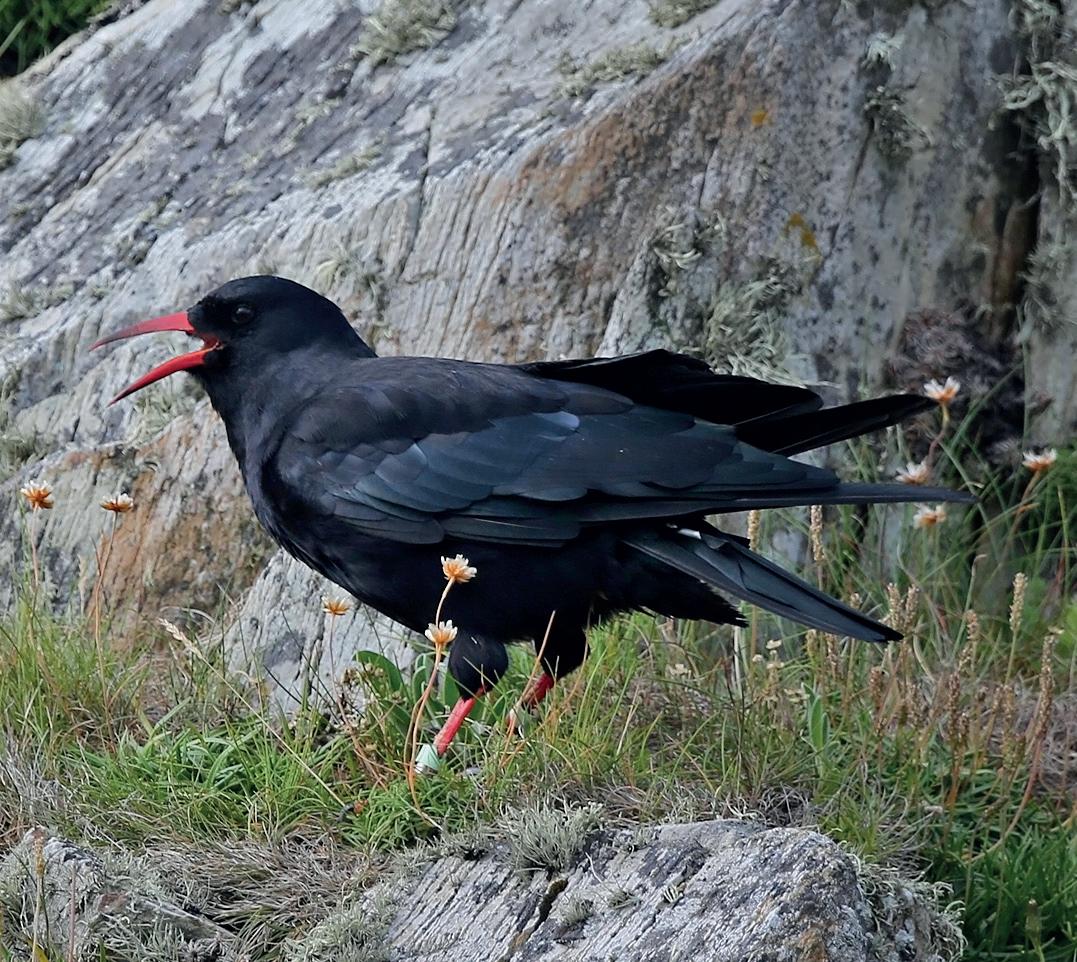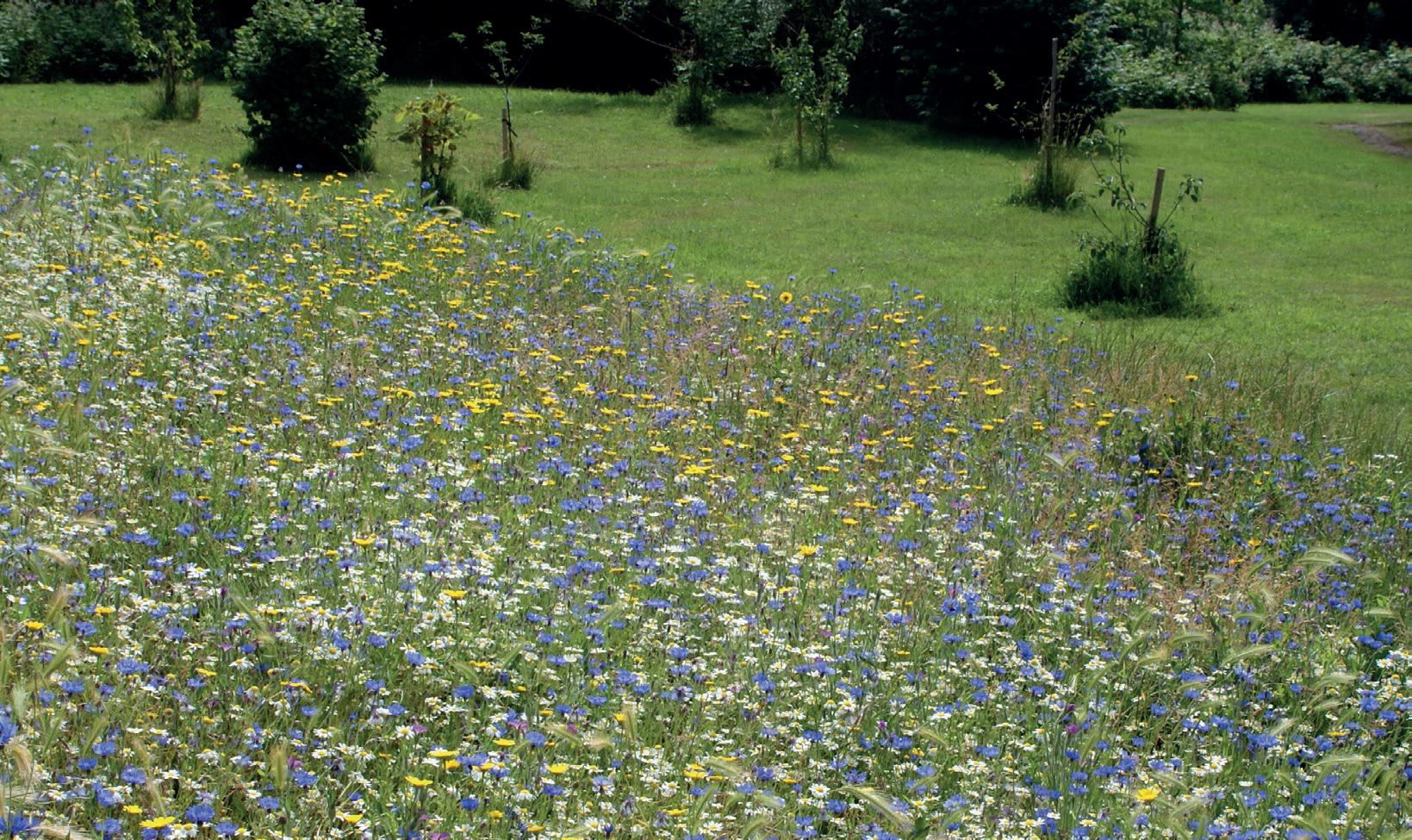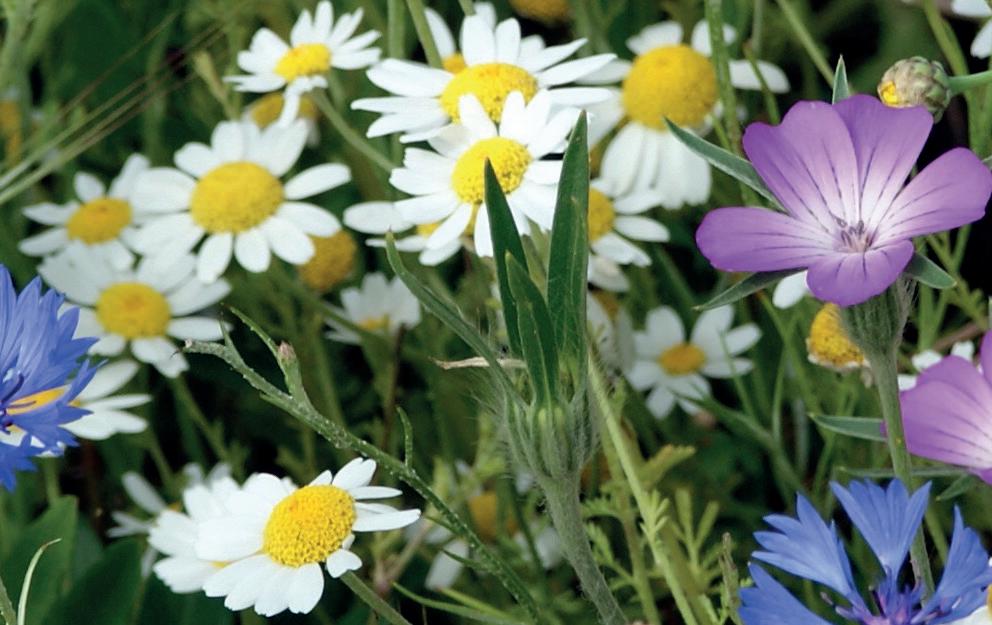
7 minute read
My wild life
Red-billed chough nest on cliffs.
Ultimately, this project is much more than a species reintroduction. Beavers are some of nature’s great eco-engineers and a once-prominent part of our cultural heritage, and we look forward to reuniting them with the Island’s waterways.
Return of the village bunting
Two more key species which have been lost in our counties are also part of the wildlife jigsaw we aim to repair. The red-billed chough and cirl bunting have the potential to inspire changes to the management of the Island’s farmland and coast. While the chough has long been absent from much of southern England, the cirl bunting clung on in the Isle of Wight, its last stronghold in the two counties, until 1993.
Eagles have been a very successful part of the Island’s Wilder journey and we believe chough and cirl bunting will only enhance this. Cirl buntings, once known as the ‘village bunting’, were found in small pockets of farmed land close to villages. They need wide hedgerows for nesting and cover, close to tall grassland full of crickets and grasshoppers to feed on; habitats readily available on the Island. Sadly, changes to farming practices meant the birds lost most of their winter habitat - weedy stubble left after the harvest of spring-sown crops. Increasing suitable winter stubble will give cirl buntings and other farmland birds food over the harsher winter months. Little Duxmore Farm, will do just that by rewilding former arable land, replicating conditions in Europe where farmland birds thrive. Working with other landowners will ensure this mosaic extends across the Island. Planned feeding stations for farmland birds and chough in school grounds and public locations will mean the community can help monitor the birds and become part of a Wilder Wight.
The results of the feasibility study of our plans for the birds will be published this spring. Already, robust evidence suggests that reintroductions are achievable and could allow these species to spread across southern England. We will establish a diverse partnership to help us achieve this vision, learning from others and pioneering new approaches. We want to help people see the value in these once-common species and reverse the declines in wildlife seen over recent decades. We can’t achieve the ambitious plans for a Wilder Wight without your help. We need 1 in 4 people to connect with wildlife and take action for nature’s recovery by 2030. Alongside our conservation work, Wilder Wight will inspire communities to get involved, adopting spaces in their towns to create space for wildlife and community areas everyone can enjoy.
We are incredibly grateful to everyone who has supported the Trust’s ambitious plans. We will need to continue to raise significant funds through membership, donations and legacies to support future land purchases, rewild Island landscapes, reintroduce species and inspire new generations of wildlife enthusiasts. We will be launching a major appeal later this year to help us bring back the beaver and create a Wilder Wight. Together we can transform the Island for wildlife and communities, making Hampshire and the Isle of Wight even better and even wilder!

Partnering for wildlife
We have teamed up with Wightlink to help showcase the Isle of Wight and its incredible natural environment. The new partnership will encourage people to visit the island and connect with nature as well as supporting the Trust’s reserves team.
Wightlink takes their responsibility for the environment seriously and their Green Agenda outlines the wide-ranging initiatives they are taking to protect the sea, land and air in Hampshire and the Isle of Wight.
The company’s decision to invest £30 million on Victoria of Wight reflects their commitment to the environment. Their flagship is the first hybrid energy ferry in England, setting new standards for crossSolent travel. She combines battery power with conventional engines to sail between Portsmouth and Fishbourne.
Wightlink is creating habitats for coastal wildlife at their ports and educating their customers about life in and around the Solent by welcoming the HIWWT’s Secrets of The Solent team on board.

MY WILD LIFE

Marion & Graham Claxton
Marion and Graham have always loved wildlife, but as they learnt more about what was on their doorstep they wanted to do more to protect it. After sowing wildflower seeds and seeing a visible increase in pollinators, they got involved with Wilder Portsmouth, a partnership project between the Trust and the Southern Co-op, to help connect people with the city’s green spaces.
My wife and I have lived in Tamworth Road for many
years and we particularly love watching the birds in our garden. We see wrens, blackbirds and sparrows in the hedgerow and goldfi nches, great spo ed woodpeckers, starlings and blue, great, and long-tailed tits on the bird feeders. We have also seen jays, sparrowhawks, peregrines, green woodpeckers, grey herons, collared doves, wood pigeons, crows and magpies in the garden! Occasionally we even get visits from goldcrests, fi eldfares, white throats and song thrushes.
Tamworth Park is a taste of the
countryside in the middle of busy Portsmouth that in recent years has brought the community together, as local residents become stewards of this wildlife haven. Many people come to Tamworth Park to photograph and generally enjoy the wildlife spectacles that unfold during the spring and summer. The park is used by youngsters to spot the wildlife and wildfl owers as they walk to and from school. Foxes, woodpeckers, and squirrels have all been known to breed in the park and perhaps there are many that the locals are not aware of.
This year we installed two nest boxes
with the help of the Trust’s Wilder Communities Offi cer, Andy Ames. They have already a racted a lot of a ention from the birds, so we added two more this winter. I’m sure these will a ract a lot of interest, not only from the birds, but also from the locals. We have seen new species of birds, and people are becoming far more interested in what’s in the park.
In 2018 we contacted Grow Wild for
packets of wildfl ower seeds and worked with Portsmouth City Council to create two wildfl ower beds which we planted with the help of our neighbours and their children. The following spring and summer, bees, bu erfl ies and all sorts of insects buzzed and fl u ered around the wildfl owers. We have continued this every year, and will do so for as long as we can. It gives us great pleasure to see the children discovering the beauty of the fl owers and insects they would never have seen otherwise. In 2019, we planted fruit trees – supplied by the local council along with Portsmouth Tree Wardens and Andy Ames. This started our group’s involvement with the Trust’s outreach programme, Wilder Portsmouth. With our neighbours we have created a Wild Street, connecting with other wild spaces across Portsmouth. We will install information boards around to create more interest in wildlife amongst residents and the wider community. Hopefully we will be planting fruiting hedges to a ract even more wildlife to the park. We’re very fortunate to have one of the few green spaces in Portsmouth right on our doorstep! Left and above: Tamworth Park is used by youngsters to spot wildlife and wild owers as they walk to and from school.


We look forward to continuing our work
with Wilder Portsmouth. We’d love to continue to nurture the wildlife that is already here and engage even more of our neighbours, as many people use Tamworth Park to reconnect with nature.
● Find out more about the work being done by the Wilder Portsmouth team at www.hiwwt.org.uk/
wilder-portsmouth
● Get involved with Team Wilder in your area or connect with others to for your own local group by emailing
wilder@hiwwt.org.uk
Love wildlife?
Give the gift of membership this spring
Treat the nature lover in your life to a year of discovery with Hampshire & Isle of Wight Wildlife Trust. Whether they love gardening for wildlife or searching for nature on their walks in the countryside there is something for everyone to enjoy.
Their membership gi will include:

● A welcome pack to open ● A guide to our nature reserves ● Our regular magazine ● Family members receive junior membership with a Wildlife Watch magazine
Your gi will bring your loved ones closer to nature and helps us create a be er future for wildlife and wild places in our two counties.
Call our membership team today on 01489 774400 or visit
www.hiwwt.org.uk/shop

Membership starts from just £3.50 a month






